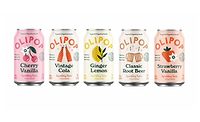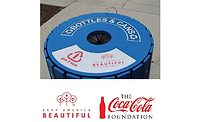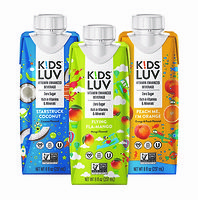Operations
Sustainable supply chain vital to beverage market
Suppliers invest in resources to reduce waste, boost sustainability

The Tampa, Fla.-based Reusable Packaging Association (RPA)’s “2020 State of the Reusable Packaging Industry Report states that in 2020, the global packaging market reached an estimated $950 billion in value. Approximately $200 billion of this is considered “transport” or “transit” packaging, of which roughly half meet the RPA’s criteria for “reusable” packaging. Together, these products comprise the $100 billion returnable transport packaging (RTP) market.
Tim Debus, president and chief executive officer of the Reusable Packaging Association, notes that production and sale of single-use beverage bottles is increasing worldwide, but the post-use recovery of these bottles for recycling is not keeping up. Around the world, more than 1 million plastic bottles are bought every minute, and fewer than half are collected for recycling. In the United States, the total plastic bottle recycling rate is 29 percent, he adds.
“This means that over two-thirds of single-use beverage bottles end up in landfill or as pollution. Consumers are catching on to this waste, inefficiency, and harm to the environment. They are forcing brands to adopt sustainable packaging and 33.5 percent are even willing to pay more for it,” he says citing a July 2019 Nielsen Insights.
Although consumers readily will switch to reusable beverage packaging when incentivized with a superior experience at a lower cost for each use, in addition to reducing burdens on the environment, there are drawbacks, Debus notes.
“Adoption of reusable packaging requires behavior and operational changes away from a long-standing mindset of disposability, and enough participants (product volume) are needed to scale the reuse solution and generate efficiencies,” he says.
Sustainable supply chain
Although primary packaging typically is the initial thought that people might have when it comes to sustainable consumer packaged goods (CPG), many original equipment manufacturers (OEM) also point to the importance of a sustainable supply chain.
“A more sustainable business starts with the supply chain and how product and parts are stored, handled, transported and delivered,” said Bob Petersen, vice president of marketing and product management at ORBIS Corp., Oconomowoc, Wis., in an October 2020 press release. “The take-make-waste philosophy no longer meets the needs of society. The circular economy concept — based on a continuous flow of product in the value circle — is the future of a successful, sustainable supply chain. At ORBIS, we focus on designing out waste (reduce), keeping products in use (reuse) and repurposing packaging at end-of-life (recycle).”
To support this effort, ORBIS offers Multitank, a reusable storage and transport container. The 400-liter conical, watertight intermediate bulk container (IBC) is designed to improve the way products are packaged, stored and transported in bulk, the company says. The container can be used in a variety of industries, including food and beverage.
“The Multitank is an innovative, cost-efficient and space-saving IBC container that works across a variety of industries,” said Bob Klimko, market development director for ORBIS Corp., in a statement. “When compared to other single-use IBCs or drums, the Multitank offers a conical design that makes it nestable and stackable, saving up to 75 percent storage space.”
OEMs also are directing their resources to address the plastic waste plaguing the environment.
Los Angeles-based Rehrig Pacific is partnering with innovators around the globe to engineer a way to incorporate ocean-recovered and ocean-bound plastics into new products without compromising strength or appearance, the company says. In October, it announced that a major U.S. city will debut a new line of residential recycling carts made from a percentage of post-consumer recycled material, including recycled ocean-bound plastics.
"What we're achieving here is a model for solving sustainability solutions around the world," said Jeff Hentges, senior vice president of operations for Rehrig Pacific, in a statement. "These aren't Rehrig Pacific's solutions alone — we're coordinating with incredible people around the globe, from Patagonian coastal fishermen, to engineers in L.A., to government leaders across the country. Everybody has a role to play, and we're all pulling together to make it happen."
Collective effort
When it comes to sustainable initiatives, many types of reusables such as harvest bins, pallets, kegs, bakery trays and dairy crates have provided value for decades. However, the market has seen the rise of smaller-footprint pallets, nestable mini-tank systems, RPCs for an increasing range of perishable food categories, IoT and more.
Jonathan North, zero waste world program lead at CHEP North America, says several innovators are advancing the reuse of beverage packaging, including closed-loop container programs through TerraCycle’s circular packaging platform, Loop.
“Loop helps reduce packaging waste by giving guests the option to pay a deposit for reusable and returnable cups or food containers with their order,” he says. “This is then refunded when the packaging is returned.”
Marija Jovic, technical director at PreScouter, Chicago, notes an even broader collective effort, as last year 170 nations pledged to "significantly reduce" use of plastics by 2030.
“The ways to achieve this would be complete global elimination of all unnecessary plastic items; innovative chemistry in making plastic that is only reusable, recyclable and compostable; and regulation enforced circulation of all plastic within the economy by preventing their accumulation in the environment,” she says.
RPA’s Debus notes that adoption of reusable packaging also will accelerate and optimize the digital transformation.
“Reusable packaging systems will not only yield greater sustainability results over single-use recycling schemes, but also will create new operational efficiencies and improve packaging performance,” he says.
Paromita Raha, PreScouter researcher and senior scientist at BOLD Therapeutics, Vancouver, British Columbia, says that as the food and beverage industry accounts for more than one third of the global packaging waste generated by consumer goods, it is under tremendous pressure to adopt reusable packaging options.
“While there is not a single ‘best way’ to eliminate wasteful packaging options, manufacturers, packaging designers, consumers, communities as a whole and proponents of sustainable solutions are all approaching the problem from divergent angles,” she says. “Innovative packaging that is durable and can sustain shipping and handling over multiple cycles is the most pressing need, and for food, beverage and other CPG, refillable delivery options are being reintroduced and gaining traction, as was highlighted in our 2020 Reusable Packaging Report.”
Looking for a reprint of this article?
From high-res PDFs to custom plaques, order your copy today!








